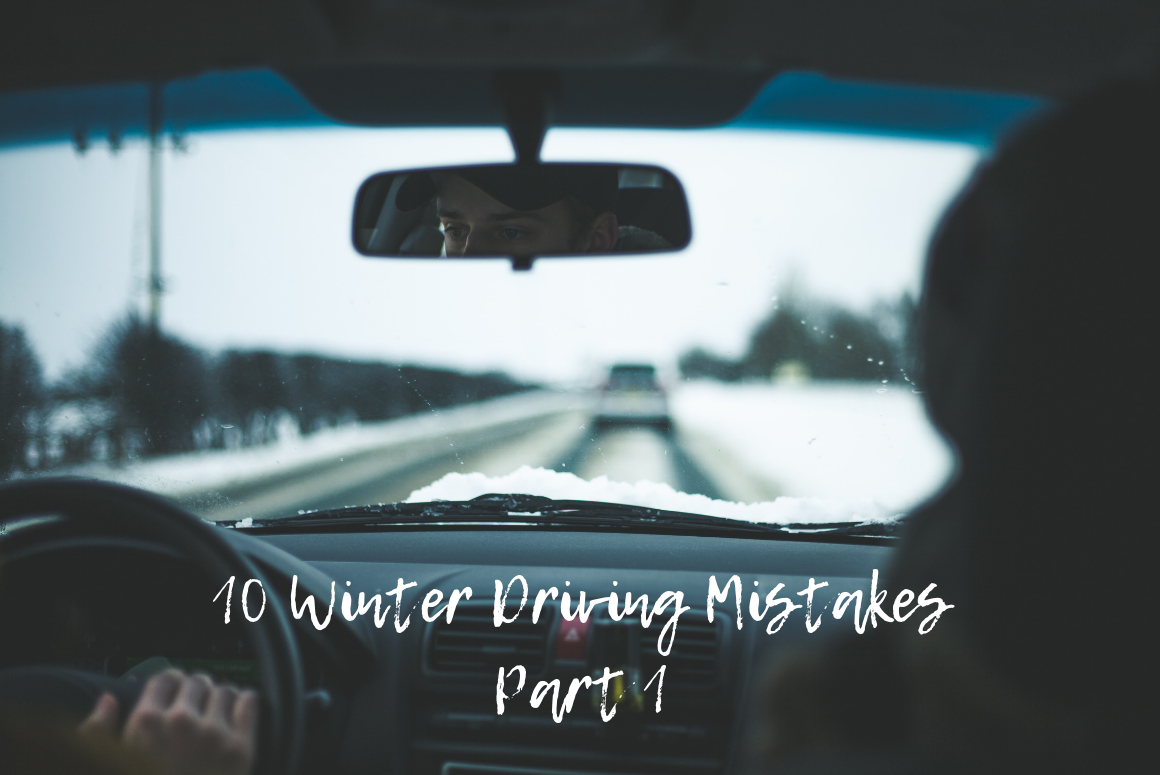It’s that time of year again when the weather gets colder, the road conditions get a little trickier, and people make regular trips to visit family and friends throughout the holidays. For many regions, winter brings snow, ice, and hail, which means that driving anywhere can be a challenge, so we’ve put together the 10 Winter Driving Mistakes you might not know you’re making!
Leaving Snow On Your Roof
For those of us not lucky enough to park in a garage or covered parking spot, parking on the street or in a driveway often means we have to clean snow buildup from front and rear windshields, as well as windows and head-/tail-lights. But do you remember to clear the snow from the roof and hood of your car too? What about your trunk? Snow tends to collect on those parts of the car a lot more than the windows, and if you drive away with even an inch of loose snow, you create a visual hazard for drivers around you.
Not Leaving Enough Distance Between You And Other Vehicles
When driving in the rain, snow, hail, or ice, it’s important to leave the right amount of distance between you and the car in front (and the car behind should do the same for you, too!). Depending on the weather, the distance you leave will change:
- Ideal conditions (clear, dry): 3-4 seconds
- Poor conditions (icy, wet, snowy, reduced visibility): 6 seconds
To help you figure out how far you are, and should be, you should pick a focal point that is parallel to the car in front of you (e.g. a building, sign, or light post), and then count how many seconds it takes you to reach the same point.
Not Being Prepared
While Winter is usually easy to see coming, snowstorms and inclement weather aren’t always so predictable. Either way, taking the time to prepare yourself for the winter months will help you and your family out well before the cold weather arrives. Pick a time like Back To School or the first day of October to give your car a complete winter check, and make sure you:
- Remind yourself of snow-driving techniques and share them with novice drivers
- Check your tires and make sure they have enough tread for colder, wetter weather, and if you live in an area that gets snow, consider buying winter tires
- Check that your car’s heating works, including the front and rear window defrosters
- Check and top up your antifreeze and washer fluid levels before you need them
- Create or review your car emergency kit, and replenish expired or used supplies
Relying Solely On 4-Wheel Drive
Yes, this amazing option on many vehicles is designed to give you much more stability on the road, but it’s not a substitute for proper winter driving techniques. Don’t let this be an excuse to drive overly-fast on roads and highways – just because you have the added traction doesn’t meant that skids can’t happen, and won’t help you stop any faster if you have to slam on your brakes.
Not Looking Beyond The Car In Front
While you should remain at a proper distance for the conditions you’re driving in, it’s also important to pay attention to what’s going on beyond the car in front of you. Chances are, by the time that driver reacts to whatever is happening in front of them, it will be too late for you to respond quickly enough to avoid an accident. Always look where you’re driving, and keep a mental note of escape routes if you see an accident, or start to skid yourself.
Stay tuned for Part 2!
Terms and Conditions
All content provided on this blog is for informational purposes only. The owner of this blog makes no representations as to the accuracy or completeness of any information on this site or found by following any link on this site. The owner will not be liable for any errors or omissions in this information nor for the availability of this information. The owner will not be liable for any losses, injuries, or damages from the display or use of this information. This policy is subject to change at anytime.

